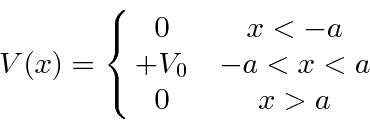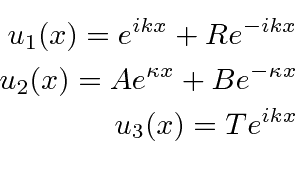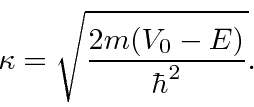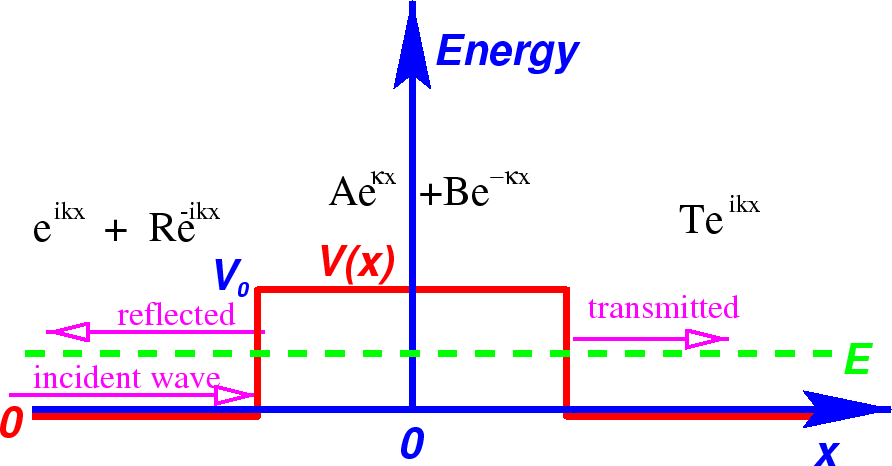Next: The 1D Harmonic Oscillator Up: Piecewise Constant Potentials in Previous: Bound States in a Contents
With an analysis of the Potential Barrier problem, we can understand the phenomenon of quantum tunneling.





This is actually the same as the (unbound) potential well problem with the substitution
The amplitude to be transmitted is


An approximate probability is sometimes useful.
![\begin{displaymath}\bgroup\color{black}\vert T\vert^2\approx e^{-2\kappa (2a)}=e^{-2\int\limits_{-a}^a \sqrt{{2m\over\hbar^2}[V(x)-E]}}dx \egroup\end{displaymath}](img1266.png)
Classically the transmission probability would be zero. In Quantum Mechanics, the particle is allowed to violate energy conservation for a short timeand so has a chance to tunnel through the barrier.
Tunneling can be applied to cold emission of electrons from a metal, alpha decay of nuclei, semiconductors, and many other problems.
Jim Branson 2013-04-22